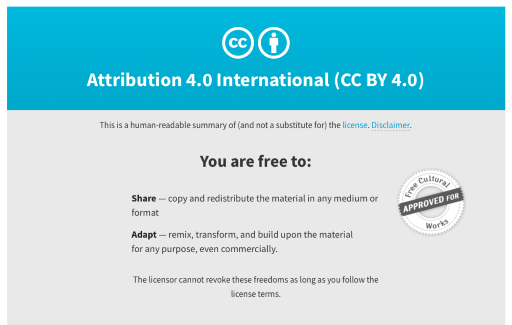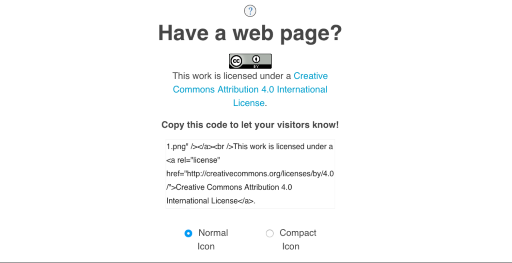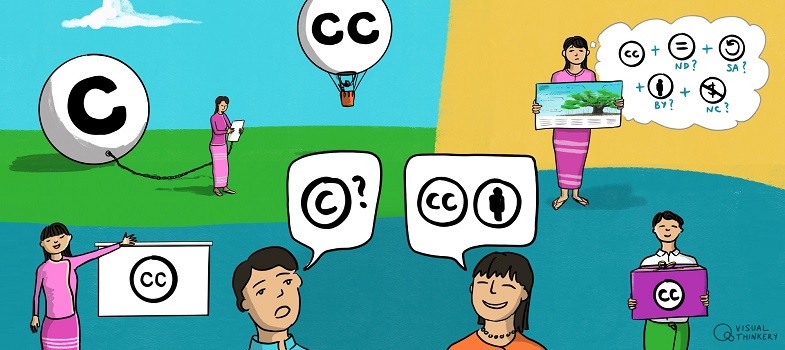Licence structure
The licences are built using a three-layer design.

Let’s look at the separate layers of a licence, as shown on the diagram above:
- The legal code is the base layer. This contains the ‘lawyer-readable’ terms and conditions that are legally enforceable in court.
- The human-readable commons deeds are the most well-known layer of the licences. These are the web pages that lay out the key licence terms in a way that is clear and easily understandable. The deeds are not legally enforceable but instead summarise the legal code.
- The final layer of the licence design recognises that software plays a critical role in creating, copying, discovering and distributing works. In order to make it easy for websites and web services to know when a work is available under a Creative Commons licence, Creative Commons provide a ‘machine readable’ version of the licence – a summary of the key freedoms granted and obligations imposed written into a format that applications, search engines, and other kinds of technology can understand. Creative Commons developed a standardised way to describe licences that software can understand called CC Rights Expression Language (CC REL) to accomplish this. When this metadata is attached to CC-licensed works, someone searching for a CC-licensed work using a search engine (such as Google’s advanced search) can more easily discover CC-licensed works.
Let’s take a quick look at the CC BY 4.0 International licence to see where we can find different layers of the licence. This is the human-readable version of the licence:

As you can see before the list of permissions that the licence grants, it clearly states: ‘This is a human-readable summary of (and not a substitute for) the licence.’ If you were to click on this link, you would find the legal code that underpins this licence type.
When you apply a CC licence to your own work, some platforms that host CC-licensed material (such as Flickr) will add machine-readable code to your work so it can be identified as openly licensed on their platform. If you have your own webpage, you can add a ‘machine-readable’ version of the licence that enables your work to be identified as using a CC licence by using the Creative Commons licence chooser. (We will discuss how to license your work in Units 4 and 5.)

Introduction
